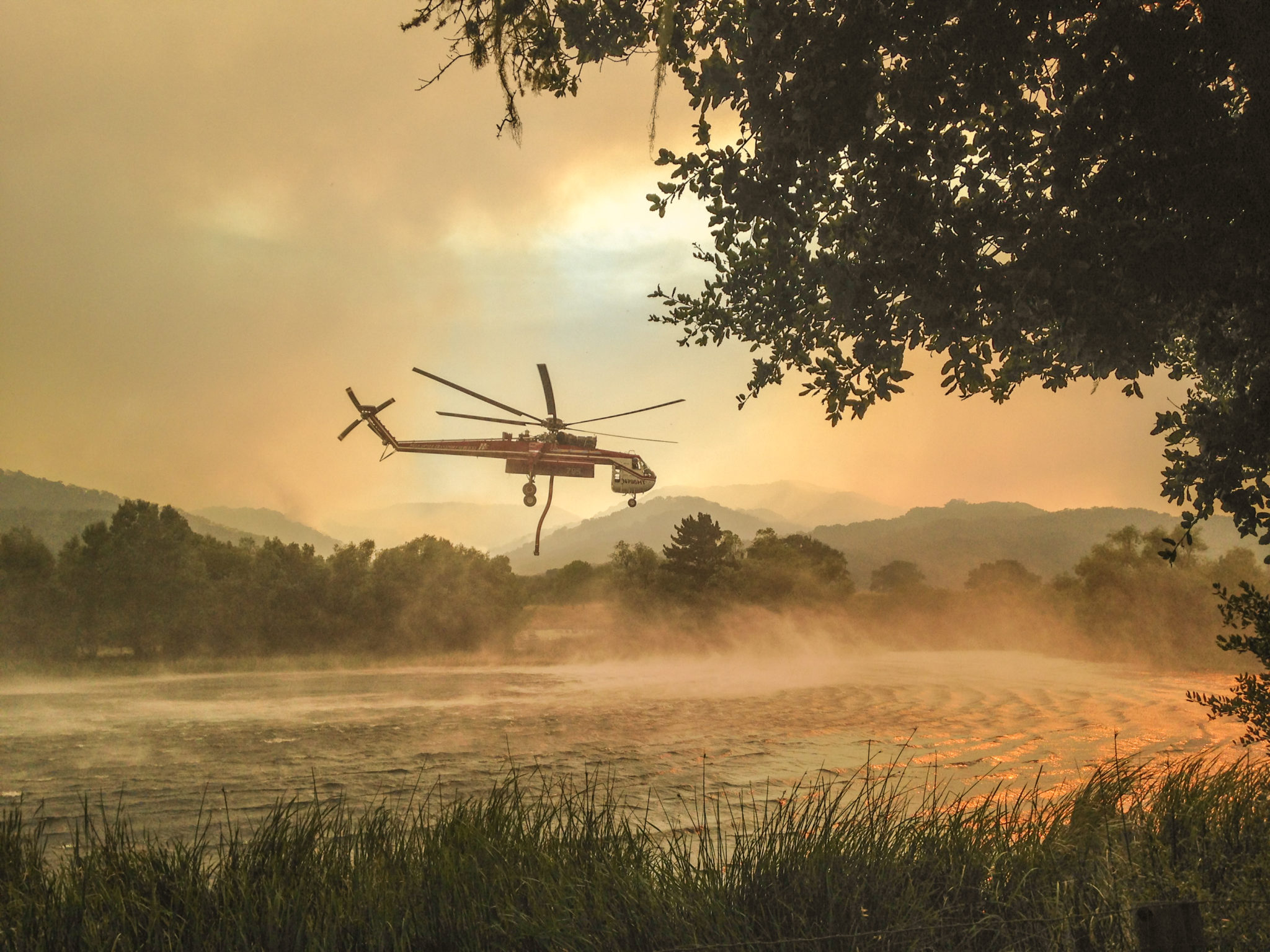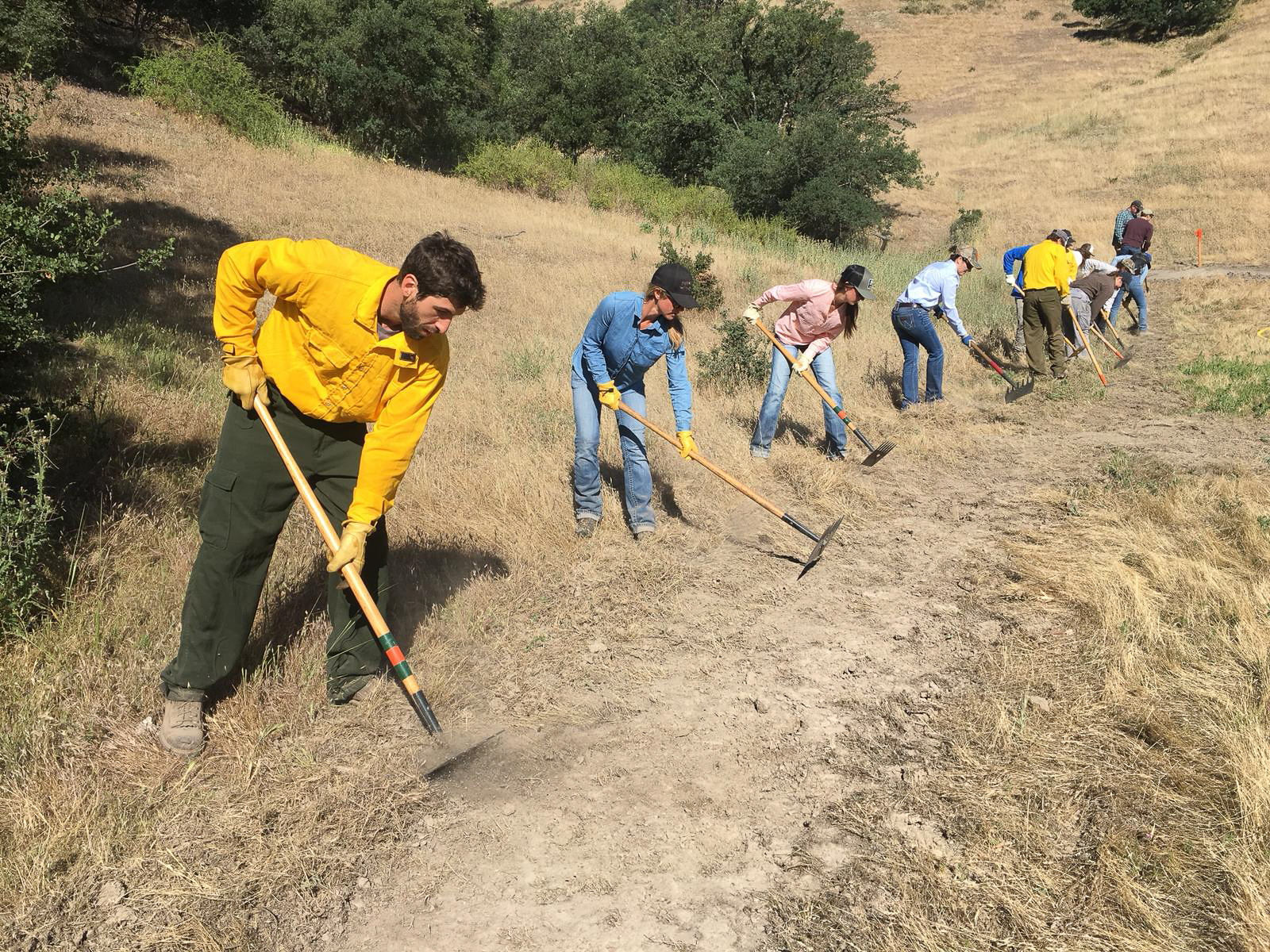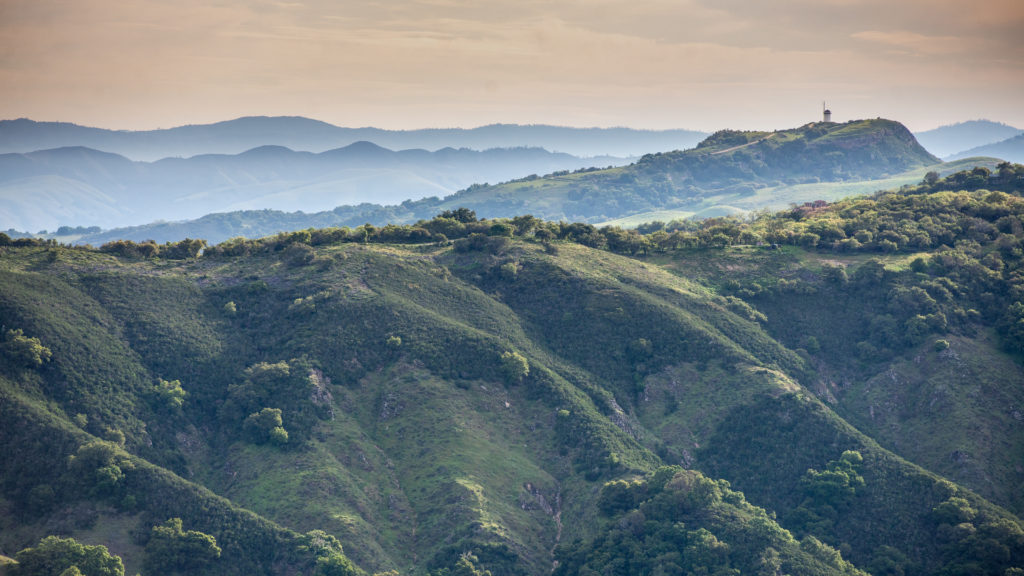On a mild summer day in July 2016, several of my colleagues at the Santa Lucia Conservancy and I stood knee-deep in a lovely coastal grassland, looking west across towering redwoods dwarfed by a dense column of smoke rising thousands of feet into the air. The wind was calm, and although the smoke had not yet shrouded the sun, a gentle snowfall of ash filled the air, foretelling dire things to come. Weeks later, we walked through that redwood forest – a silent, otherworldly cathedral of blackened trees, snowy carpets of ash, and drifting smoke turned golden-red by shafts of sunlight. Today, the forests and grasslands touched by the flames have recovered and indeed are thriving. But the aftermath of the fire and its effects on our nearby human communities is still unfolding.
The Soberanes was the first of a series of catastrophic fires which has rocked California in the past five years, a natural process seemingly run amok as a result of past fire suppression policies, changes in climate and habitat conditions, and the expansion of development deep into natural areas. Throughout the Wildland Urban Interface (WUI), fire experts, insurance companies, land managers, planners and community leaders are coming together to figure out how to address this emerging existential threat to our human and natural communities, in a way that preserves life and property, precious natural resources, and our quality of life.
The Santa Lucia Conservancy is contributing to this regional conversation. With over 15 years’ experience working with landowners to manage fuels safely and sustainably, we now find our Preserve-wide Fuel Management Standards garnering new interest. Conservancy staff are teaming up with fuel management experts to share the key principles of these Standards through trainings, conferences and meetings with policy makers. One key principle: work from “the home out and the ground up” to get the best value for your investment, and to ensure your protective measures are effective and sustainable.

Fire Smart – Oak Wise
Another fire season will soon be upon us and across the region preparations are well underway. Just recently, PG&E announced it will be pruning or removing over a million trees in California, and landowners large and small are being advised by their insurance companies to take dramatic action to maintain their insurability. Fire safety is a top priority for all of us. But excessive clearing is expensive, hard to sustain, and harmful to natural habitat and scenic beauty. The level of mowing, brush clearing and tree removal happening throughout the region is unprecedented and to some, alarming. Chief among the many concerns: is it really necessary to remove or severely prune our iconic heritage oaks?
At the Santa Lucia Preserve, we have over 15 years’ experience creating outstanding defensible space for our homes while also sustaining the natural beauty and vibrant wildlife habitat for which the Monterey Bay region is acclaimed. Wildlands resource and fuel management expert Carol Rice helped the Santa Lucia Conservancy craft highly effective and sustainable Fuel Management Standards in 2005, with updates as needed to keep us current with the latest science and policy. These Standards meet or exceed the state requirements and also allow landowners to retain the treasured natural features and wildlife habitat so essential for their quality of life. Three of the foundational principles of these Standards are summarized below. For your own copy of the Standards, click this link here.

Work from the home out, and the ground up. Insurance companies are demanding ever-expanding fuel management zones, but the best bang for your buck starts with the home itself. Help make your home ‘ignition proof’ by avoiding the accumulation of dead leaves in gutters and creating a 5 foot ‘non-flammable zone’ around the perimeter of your home. Brick or gravel walkways and moist, non-woody plants such as succulents in this zone help ensure that flying embers won’t catch fire close to your home. Talk to your contractor about replacing exterior vents with new spark-arresting varieties – one of the best actions you can take for older homes. Removing weeds, clearing dead material from landscaping and mowing grass within 30 feet of each structure is also among your highest-value efforts.
- Oak trees are fuel management allies – retain them! In oak woodlands, dry ‘flashy’ weeds like French broom, untrimmed grass, dead branches and dry woody brush pose the greatest threats. Live oaks retain moisture, shade out weeds and resist spark ignition when kept free of dead material. ‘Cleaning up’ around trees by mowing grass, keeping brush short and removing small branches and dead limbs supports the health of the tree and provides defensible space. Limit branch removals to all dead limbs and living branches that are less than 3 inches in diameter to a height of 8 feet (15 feet over roads and driveways). There is no need to remove healthy branches that are greater than 3 inches around. Branches greater than 6 inches in diameter provide important structural support and should ONLY be removed if they are dead/dying. For young trees less than 24 feet high, trim up just the lower third of the tree. Thinning the crown or canopy of oak trees is counter-productive, as it increases sun penetration to the ground, encouraging ‘flashy’ brush and weeds.
- Join the war on weeds! The same handful of invasive weed species that are degrading wildlife habitat and spoiling iconic vistas – pampas grass, French broom, thistles and poison hemlock – are also dangerously dry and flammable ‘ladder fuels’ that move fire into our woodlands and across the landscape. Vigorous removal of these weeds when they make an appearance on or near your property will help keep the entire community safe and scenic.
Whatever the future may hold, we know wildfire has always been, and will always be part of our natural heritage. Working together, we can ensure our communities are fire resilient and sustainable, while preserving the iconic oaks, scenic vistas and abundant wildlife and habitat that make living here so exceptional.
By Christy Fischer
